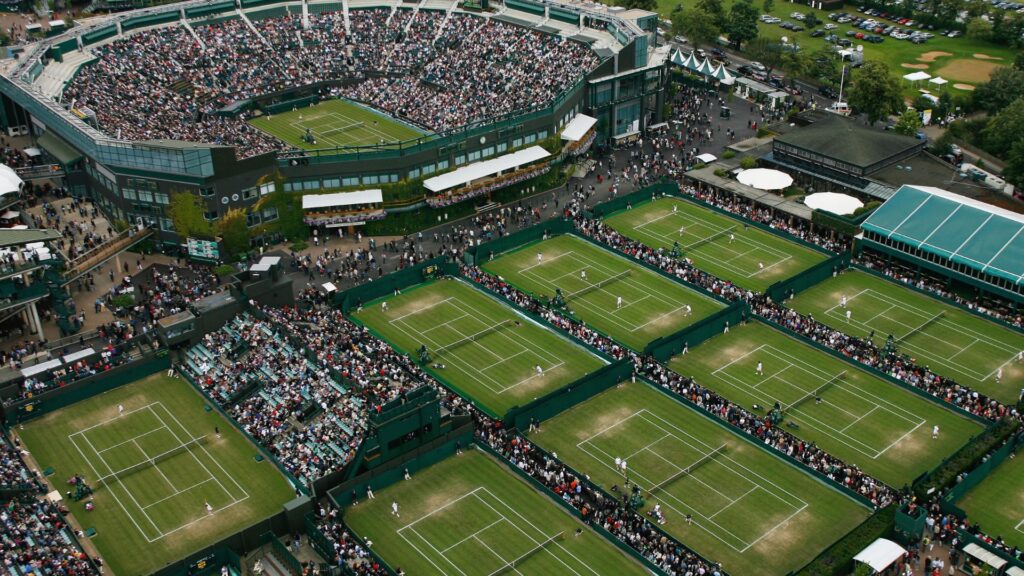Table of Contents
ToggleAn In-Depth Look at In-Play Market Dynamics and Strategies
Tennis trading represents a distinct evolution from traditional sports wagering, transforming speculative activity into a dynamic market engagement. This analysis explores the mechanics of tennis trading, providing a foundation for those seeking to operate within this sector. The focus shifts from merely predicting an outcome to capitalizing on the fluctuations in market prices that occur before and, significantly, during a match’s progression.
A trader might, for example, take a ‘back’ position supporting a player at a certain price level. If the match dynamics subsequently move in that player’s favor, causing prices to adjust, the trader could then establish a ‘lay’ position (trading against the same player) at a lower, more favorable price. This maneuver aims to secure a potential profit irrespective of the match’s final result.
This practice distinguishes the trader from a conventional speculator; the trader actively manages market exposure, seeking to mitigate risk by adjusting positions based on real-time events rather than passively awaiting the event’s conclusion. While potential gains per operation might be smaller, the frequency can lead to more consistent returns over time. Thus, tennis trading centers on anticipating and exploiting price movements throughout the contest.
Core Market Mechanics
The live, in-play phase is where the market exhibits its most pronounced activity. Once play commences, market prices adjust constantly in response to unfolding events. Each point scored, game won, or especially critical moments like break points, can trigger significant shifts in perceived probabilities and, consequently, market prices. The primary market, commonly termed ‘Match Winner’ or similar, concentrates the highest volume of trading activity.
Effective participation necessitates access to live visual coverage, either via streaming or television broadcast. Observing the action in real-time enables traders to react promptly to developments influencing market sentiment and price levels.
This form of trading heavily relies on exchange platforms, with providers like Betfair being notable for their market depth or liquidity. Unlike traditional bookmakers who set their own prices, exchanges function as peer-to-peer marketplaces where users trade directly against one another. They facilitate both ‘back’ (supporting an outcome) and ‘lay’ (trading against an outcome) positions. The ‘lay’ functionality allows users effectively to take the opposing side of a traditional wager.
Exchanges typically generate revenue through a small commission on net winnings. This peer-to-peer structure often results in more competitive price levels compared to fixed-price bookmakers, as prices are determined by supply and demand dynamics rather than predefined margins.

The Significance of Liquidity
Market liquidity is a critical element in tennis trading. It refers to the volume of money available for trading on a specific event within an exchange platform. High liquidity offers several advantages: greater price stability and the ability to have trades executed quickly and efficiently. In the fast-moving environment of in-play tennis trading, where prices can change rapidly, swift execution is paramount for entering and exiting positions effectively. Insufficient liquidity can hinder a trader’s ability to get their positions matched at desired price points, increasing risk and limiting opportunities.
Beyond the main Match Winner market, other markets such as Set Winner, Game Winner, Handicap markets, and Total Games offer additional avenues for applying trading strategies.
Key Factors Influencing Market Prices
The prices and dynamics within the tennis trading market are shaped by a complex interplay of factors that traders must carefully consider. Among the primary drivers is the form and physical condition of the players involved. A player demonstrating strong recent performance and fitness generally commands prices reflecting higher implied probability, whereas poor form or injury concerns will see their price levels increase.
Analysis should extend beyond simple win/loss records to include detailed performance statistics. Another crucial element is the playing surface—clay, grass, or hard courts—as each possesses unique characteristics favouring different playing styles and affecting player performance significantly. A player’s historical performance on the specific surface is a vital consideration. Furthermore, weather conditions can significantly impact outdoor matches; temperature, wind, humidity, and precipitation can influence play and market prices, making weather forecasts relevant for traders.
Additionally, the history of encounters between the players, or head-to-head records, provides valuable context, revealing potential stylistic or psychological edges, though this must be balanced with current form assessment. Other influences, such as player fatigue, motivation levels for a particular event, significant shifts in market sentiment, and late-breaking news, all contribute to price movements. Successful traders develop the ability to accurately weigh these diverse factors and anticipate the market’s reaction.
Common Trading Strategies Employed
Participants utilize various strategies in the tennis trading markets. One common approach is scalping, a high-frequency method aiming to capture small profits from minor, rapid price fluctuations by entering and exiting positions within seconds or minutes. Another strategy involves trading break points, focusing activity around pivotal moments when a serve is under threat, capitalizing on the heightened price volatility during these high-pressure situations. A lower-risk technique is “sit-down” trading, which leverages the brief pauses between games where market volatility tends to decrease, offering calmer opportunities for entry or exit.
Traders might also look for compression points, situations often arising late in a set where the potential reward appears significantly greater than the potential risk for a particular trade direction, requiring an accurate reading of scoreline pressure. Some employ pre-match strategies, attempting to anticipate market movements before play begins based on news, analysis, or tracking market movements.
Finally, in-play game reading involves closely observing the match flow, player body language, momentum, and real-time statistics to identify trading opportunities as the match unfolds. It is essential to recognize that no single strategy guarantees success; adaptability and adjusting the approach based on specific match conditions are key.
Risk and Reward Considerations
Tennis trading presents opportunities for financial gain, stemming from the frequency of matches and the volatility inherent in live markets. Consistent application of strategies can potentially accumulate profits over time, particularly in highly liquid markets. However, the same volatility also carries significant risk, as unforeseen events can cause sudden, adverse price movements. Rigorous risk management is therefore essential for long-term participation.
Effective risk management encompasses several vital components. Central to this is careful capital management, allocating a specific budget for trading activities and strictly adhering to that limit. Implementing loss limitation mechanisms, often termed stop-losses, is also critical for predetermining the maximum acceptable loss for any single trade and exiting the position if that threshold is reached.
Furthermore, a solid understanding of probability assessment allows traders to evaluate implied probabilities in market prices and seek situations offering perceived value. It is equally important to avoid the detrimental practice of chasing losses by resisting the urge to increase position sizes or take undue risks after setbacks. Finally, discipline in adhering consistently to a predefined trading plan and risk parameters underpins the entire process, ensuring that losses, which are an inevitable part of trading, are managed effectively and do not jeopardize overall capital.
The Psychology of Trading
The psychological dimension of tennis trading is as critical as technical knowledge. Emotions such as fear, greed, and frustration can significantly impair decision-making if not managed effectively. A state known as ’tilt’, where emotional distress leads to impulsive and irrational trading, poses a substantial risk, often exacerbating losses.
Developing an effective trading mindset involves cultivating several key attributes. Discipline and emotional control are paramount, enabling adherence to the trading plan despite emotional impulses or market noise. Patience and realistic expectations are necessary to understand that profitability is accrued over time and losses are part of the process. Traders must also foster objectivity and the capacity to learn from both winning and losing trades, analyzing outcomes dispassionately to refine strategies.
Maintaining mindfulness, or focused attention on the present moment and the current trade execution, helps avoid distractions. Lastly, employing effective stress management techniques allows traders to remain calm and rational during volatile market periods. A robust psychological framework is indispensable for navigating the challenges and pressures of tennis trading.
Foundations for Successful Tennis Trading
Tennis trading is a complex endeavor merging sports analysis with market participation principles. Success requires a deep understanding of the sport, financial market mechanics, and disciplined emotional management.
For aspiring traders, starting with small position sizes allows for learning market dynamics without significant capital risk. Focusing initially on mastering one or two specific strategies before diversifying can be beneficial.
Maintaining a detailed trading journal (recording decisions, rationale, and outcomes) is invaluable for performance analysis and improvement. Continuous learning and strategy adaptation are crucial in this evolving market. Above all, rigorous risk management and psychological fortitude form the bedrock of sustained success in tennis trading.





